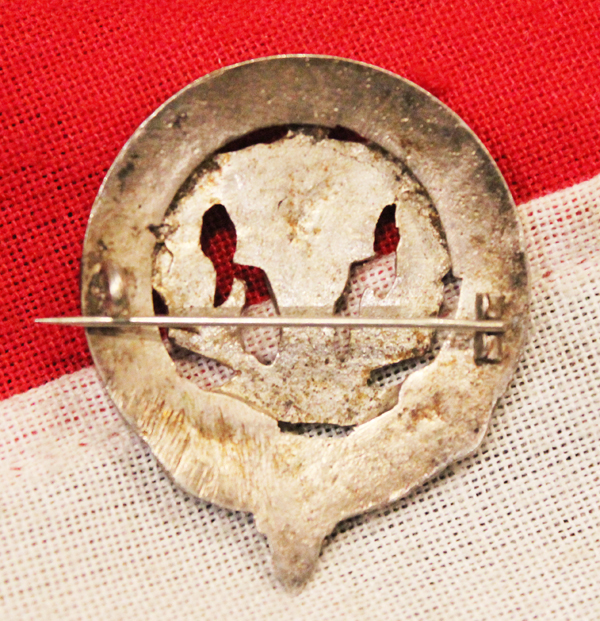Scottish Silver Buchanen 'Audaces Juvo' Clan Glengarry Badge 1930's
Not hallmarked silver. Clan Buchanan Audaces Juvo I Help the Brave. Is an armigerous Scottish clan whose origins are said to lie in the 1225 grant of lands on the eastern shore of Loch Lomond to clergyman Sir Absalon of Buchanan by the Earl of Lennox. A Dexter Hand Holding Up A Ducal Cap Proper., Tufted On The Top With A Rose Gu., All Within Two Laurel-Branches In Orle Vert. Traditionally, the Glengarry bonnet is said to have first appeared as the head dress of the Glengarry Fencibles when they were formed in 1794 by Alexander Ranaldson MacDonell of Glengarry, of Clan MacDonell of Glengarry. MacDonell, therefore, is sometimes said to have invented the glengarry - but it is not clear whether early pictures of civilians or fencible infantry show a true glengarry, capable of being folded flat, or the standard military bonnet of the period merely 'cocked' into a more 'fore-and-aft' shape. The first use of the classic, military glengarry may not have been until 1841, when it is said to have been introduced for the pipers of the 79th Foot by the commanding officer, Lieutenant Colonel Lauderdale Maule.
It was only in the 1850s that the glengarry became characteristic undress headgear of the Scottish regiments of the British Army. By 1860, the glengarry without a diced border and usually with a feather had been adopted by pipers in all regiments except the 42nd (Black Watch), whose pipers wore the full dress feather bonnet. In 1914, all Scottish infantry regiments were wearing dark blue glengarries in non-ceremonial orders of dress, except for the Cameronians (Scottish Rifles) who wore them in rifle green, and the Scots Guards, who wore peaked forage caps or khaki service dress caps.
Code: 21051
65.00 GBP


